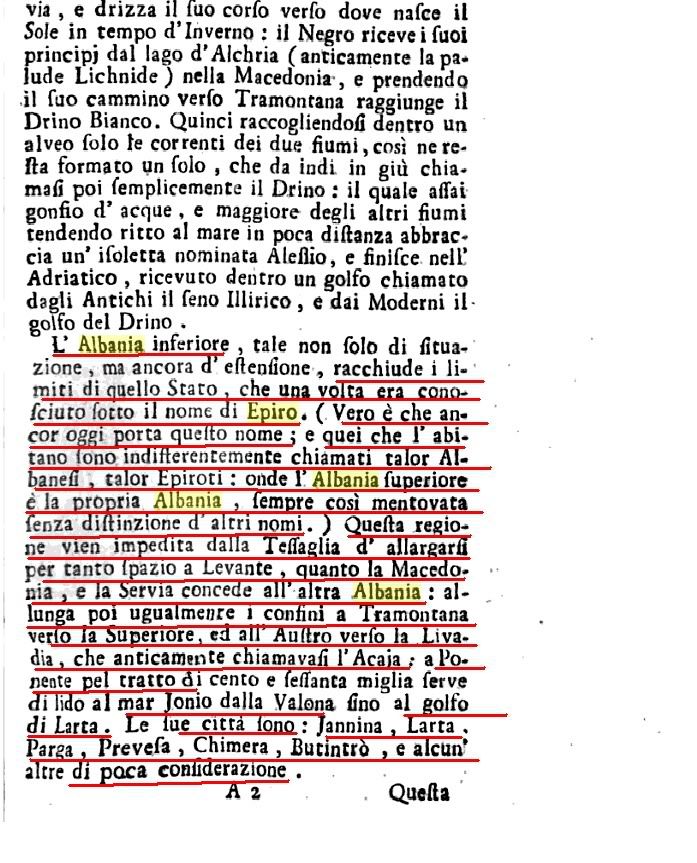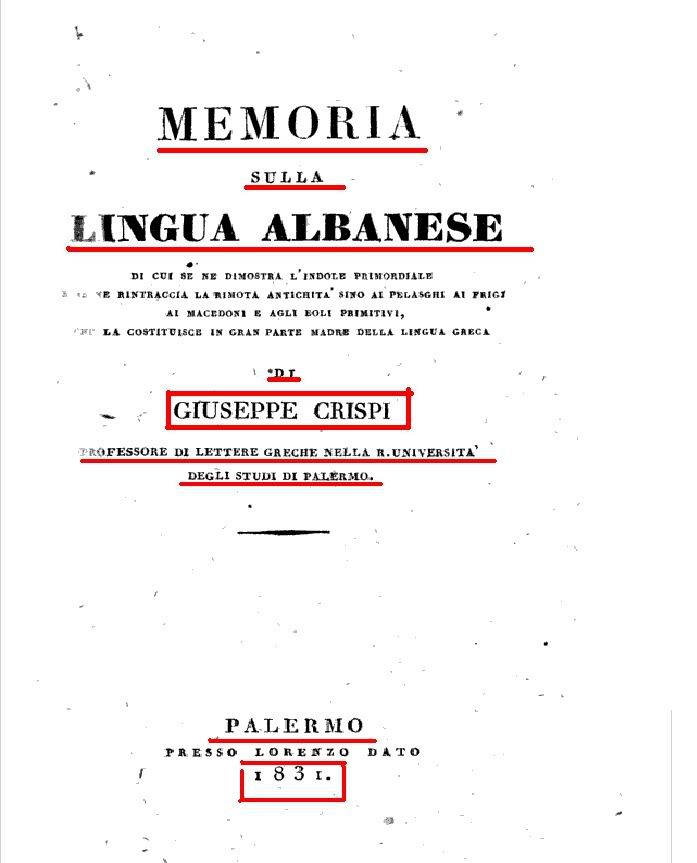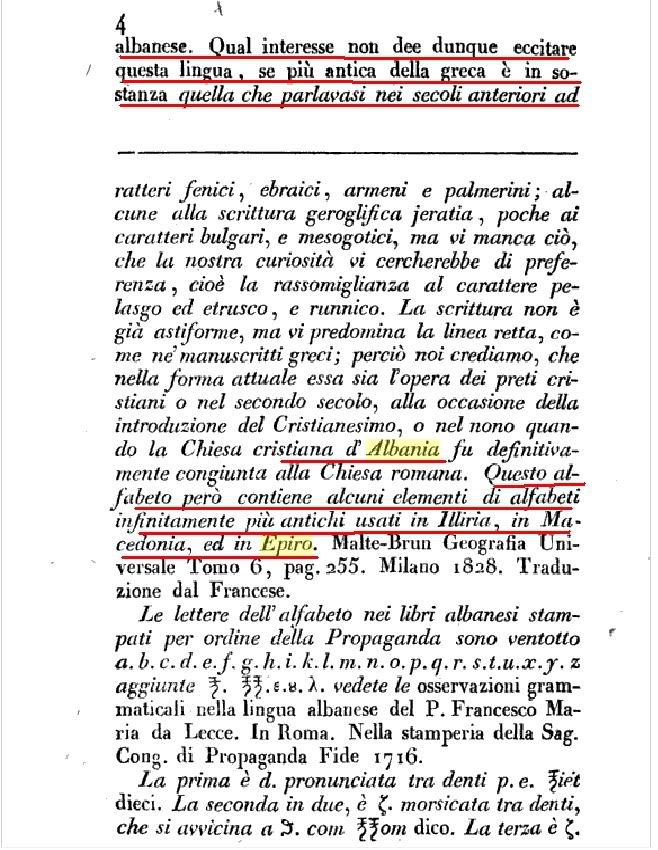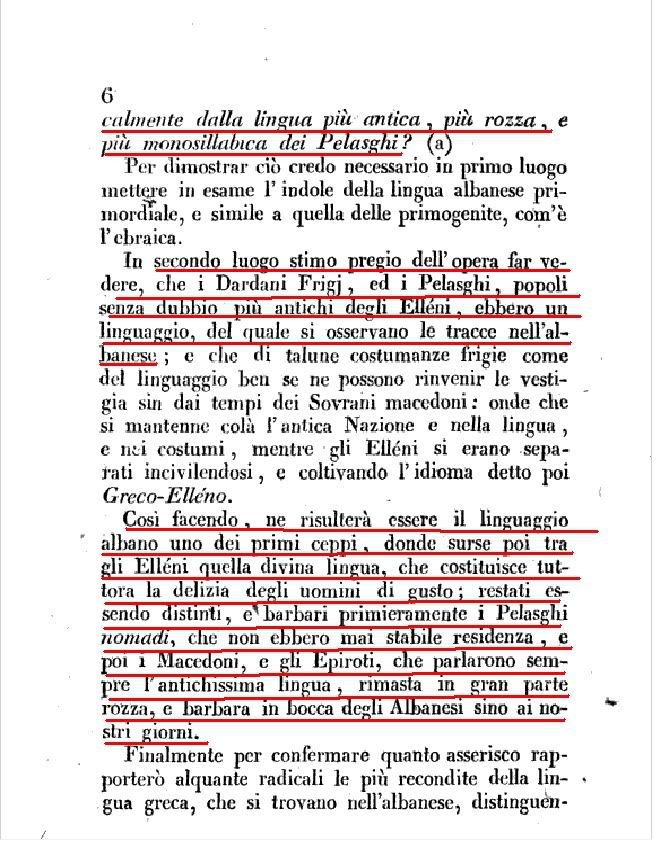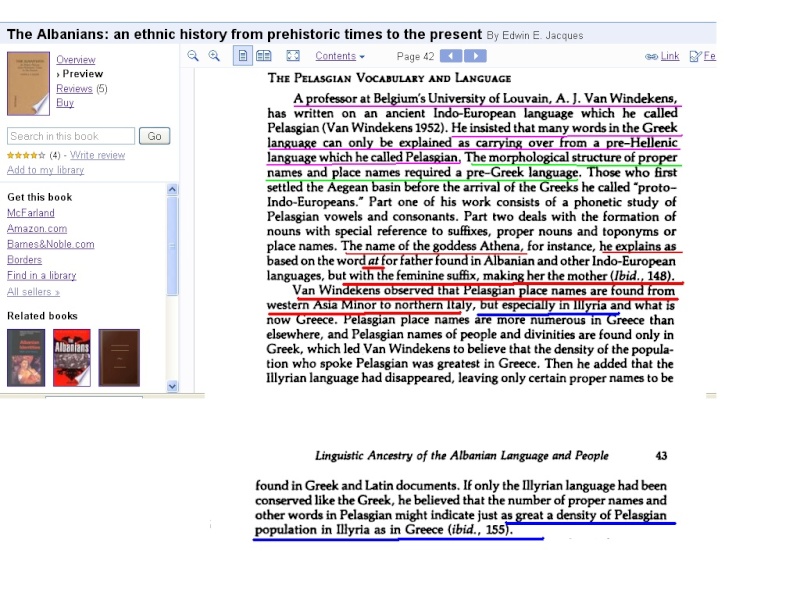pranine e kudondodhur dhe te gjithgjendshme ne Epir, kane shpikur nje arsyetim
sa falso aq edhe banal se shqiptaret ose Iliret ne Epir jane vendosur atje,
pas shkrumbimit dhe rrafshimit te 70 qyteteve epirote dhe debimit te 150.000 vendasve
nga romaku i eger Paul Emili. Se shqiptaret jane vendosur te cytur nga romaket,
kjo nuk ka kurrfare logjike, ose te pakten s'eshte dokumentuar historikisht ne asnje vend.
Keta 150.000 te debuar nuk ishin gje tjeter pevec banore autoktone ilire, dmth shqiptare.
Nderkaq, "Greket" harrojne se pikerisht "ata" jane te ardhur ne Epir,
me ndihmen e Perandorise Bizantine nga Azia e Vogel:
THE INFLUX of Greek REFUGEES After 1204
Before the 4th Crusade, Epirus was an obscure and forgotten region in the Byzantine
world. But the fall of Constantinople to the Franks on 13 April 1204 and the subse-
quent creation of the state of Epirus by Michael I Komnenos Angelos Doukas (1205-
ca.1215) made it a destination for a lot of Greeks who wished to escape Latin rule, to
join the struggle against it, or who more simply wished to find conditions of stability.
So our sources mention this influx of refugees, coming from Constantinople. Demetri-
os Chomatenos, archbishop of Ohrid, says that half at least of the refugees from Con-
stantinople found asylum in Epirus. The most famous is the former Byzantine Emperor
Alexis III. But we can also find a Theodore Makrembolites, who fled Constantinople
for Corfu, a Theodore Demnites who escaped Anatolia for the region of Achelôos in
Epirus, and a monk who left Hosios Loukas near Thebes and came to Naupaktos close
to Metropolitan John Apokaukos47. Theodoros Chamaretos, a Greek lord in the Pelo-
ponnese, fled to Epirus, and wrote to the father of his wife that she could come and join
him, since Epirus “was full of countless refugees from the Peloponnese, many of them
persons of rank and wealth, and the lady would certainly find herself among friends and
compatriots”48. This influx of Greek refugees continued throughout the century: even
after 1261 and the restoration of Constantinople by the Emperor of Nicaea, Michael
VIII Palaeologos, Epirus and Thessaly welcomed political or religious refugees fleeing
from the Byzantine court, for example in the 1270s the opponents of the ecclesiastical
policy of Emperor Michael.The most noble of the refugees, coming from Constantinople or from other places,
seem to have found a place in Ioannina, where the castle49 was created specially for
them by Michael I50. This city, quoted by John Apokaukos as a p???d???, that is a “small
city”, became a new Noah’s Ark for the refugees. Their installation there seems to have
caused some problems, since in 1232, after the capture of Michael’s brother and succes-
sor, Theodore (1215-1230), by the Bulgarians, the local inhabitants tried to expel them
from the site that had been allowed to them by Michel I, and guaranteed by Theodore51.
They finally failed in this purpose, and the colonization of Ioannina finally constituted
a real success: even if the official capital of the state of Epirus remained in Arta, Ioan-
nina quickly became the equivalent of Arta in terms of population, economical impact
and political influence.The Greek population of Ioannina nevertheless was and remained different from the
rest of the Greeks of Epirus, and notably from Arta. A large part of them originating
from Constantinople, the refugees were disdainful of Epirus. During the 13th century,
therefore, the inhabitants of the city, or at least its elite, supported the traditional Byzan-
tine imperial ideology, incarnated by the Komnenos Angelos Doukas dynasty, which in
the times of its ascendancy came close to recapturing Constantinople from the Latins,
and restoring the Empire. Ioannina and Arta therefore followed the same policy from
the birth of the state of Epirus: they both took up the struggle against the Latin invad-
ers. But afer the rapid expansion of Teodore, who quickly subdued Tessaly, Macedo-
nia and western Trace, and was crowned emperor in Tessaloniki, his new capital, in
1227, the defeat of Klokotnica in 1230 by the Bulgarians ruined his hopes of restoring
the Empire. In Arta, which did not care for Teodore’s imperial dreams, Michael II, son
of Michael I, took power and Epirus, including Ioannina, became independent from
the empire of Tessaloniki, which disappeared in 1246, falling to the Nicene army. In
1259, afer the battle of Pelagonia, the armies of Nicea invaded Epirus, but they faced
the staunch resistance of the population, as well as of Arta and Ioannina.
In the 14th century, nevertheless, Ioannina and Arta no longer united for the sake of
the state of Epirus, which was now seen by Ioannina as an obstacle to the unity of the
Empire, which had been restored by the Nicenes in 1261 when they recaptured Con-
stantinople. In 1318, Tomas Komnenos Doukas (ca. 1297-1318) was assassinated by
his nephew Nicholas Orsini, who took power in Arta. Ioannina refused to accept this
coup and negotiated its reunion with the Empire. In the 1320s, Emperor Andronikos II
gave Ioannina to John Orsini, brother and successor of Nicholas, who held it as an im-
perial governor. Later, in 1337, afer the death of John, Andronikos III invaded Epirus
and annexed it to the Empire. Te next year, a revolt occurred in Arta, which submit-
ted only in 1340, and rebelled again in 1342, while Ioannina in this period remained
faithful to Byzantium.Te death of Andronikos III in 1341 precipitated the Byzantine civil war (1341-1354),
provoking the Serbian invasion led by Stefan Dušan, and the subsequent collapse of
Imperial domination in the Balkan peninsula. So the relationship with the Empire be-
came a secondary matter; but as we shall see, the cities of Ioannina and Arta continued
to respond diferently in regard to the new problem faced by Epirus, that of Serbian
expansion and Albanian immigration.





